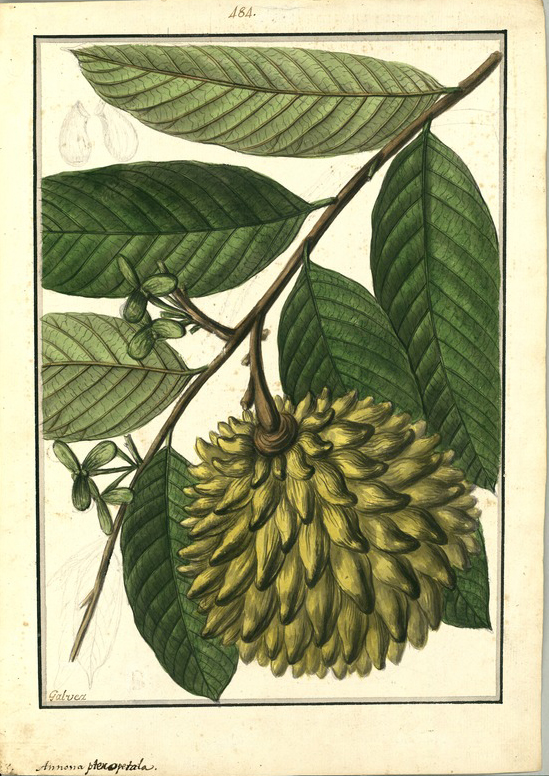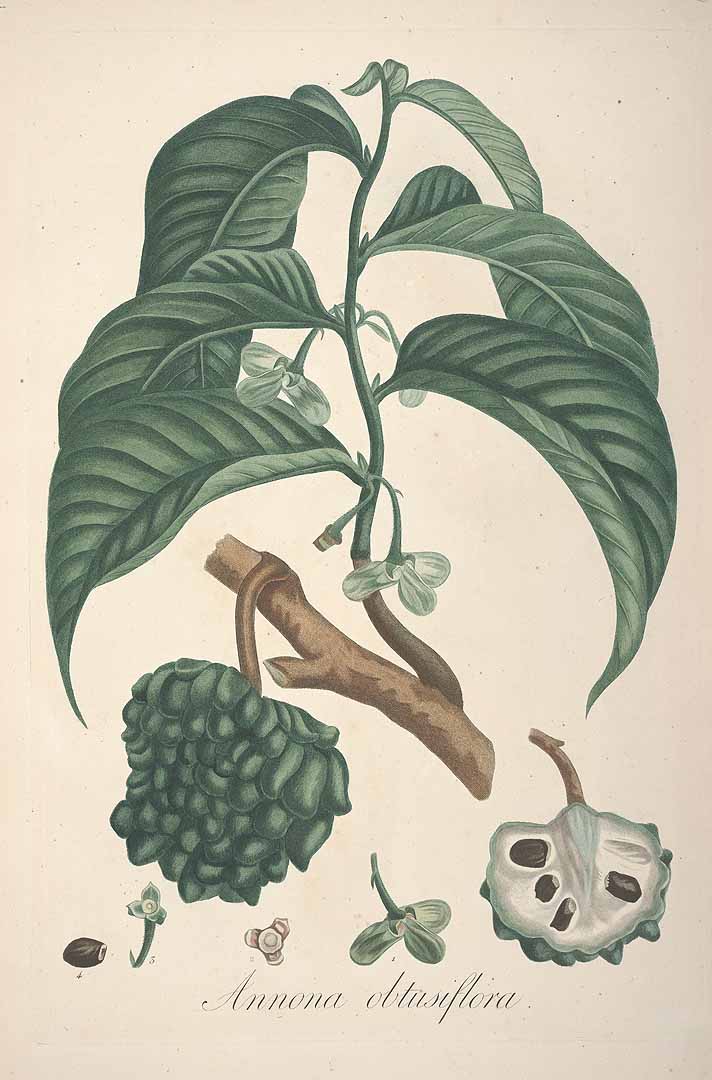! Nouveau site ici !
Vita > Plantae > Magnoliophyta > Magnoliopsida > Magnoliales >
Annonaceae > Rollinia
Rollinia mucosa
(Rollinia)

 | *****
| *****
Vita > Plantae > Magnoliophyta > Magnoliopsida > Magnoliales >
Annonaceae > Rollinia
Rollinia mucosa
(Rollinia)

3,5/3
Un arbre à feuilles persistantes de taille moyenne. Il atteint une hauteur de 4 à 15 m. Les feuilles sont vertes simples et riches. Ils sont oblongs et longs de 28 cm. Ils sont légèrement poilus en dessous.... (traduction automatique)
→suite
⬀
Le  donne accès au menu
donne accès au menu (c'est votre point de repère) 😊 ;
En dessous vous avez la classification, à partir de la vie (Vita, premier rang) jusqu'à la classe au dessus de la plante, dont vous trouvez ensuite le nom scientifique/botanique (latin) puis le nom commun (français), le cas échéant ;
C'est aussi un lien vers la fiche complète (tout comme la ✖, en bas à droite, et le +, en dessous de la description) ;
Vient alors l'illustration (ou ce qui la remplace, en attendant), la comestibilité :
Et en bas
⬂

![Illustration Rollinia mucosa, Par Britton, N.L., Horne, F.W., Popular flora of Puerto Rico, Flora Borinqueña [unpublished watercolors] Popular Fl. Puerto Rico t. 37] , via plantillustrations Illustration Rollinia mucosa, Par Britton, N.L., Horne, F.W., Popular flora of Puerto Rico, Flora Borinqueña [unpublished watercolors] Popular Fl. Puerto Rico t. 37] , via plantillustrations](../inc/images/illustrations/rollinia_mucosa.jpg )





